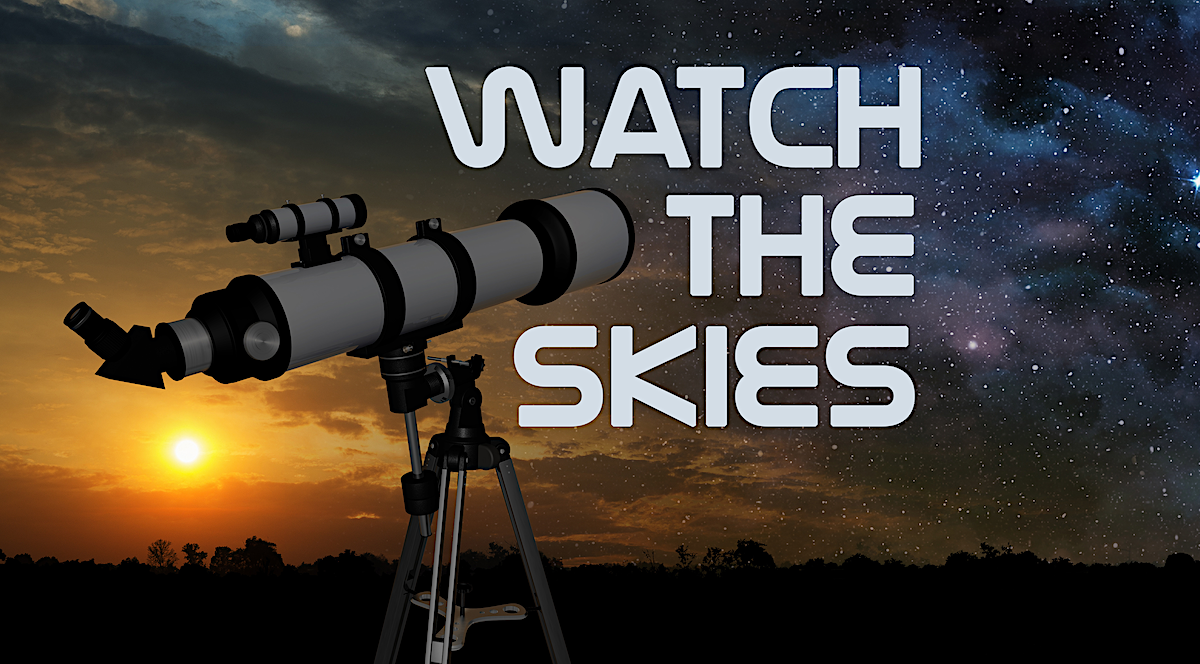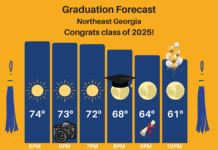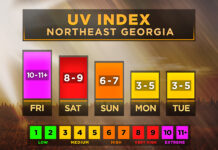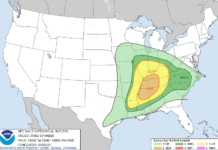
Mars, meet Venus. Venus, this is Mars.
If you step outside tonight, you’ll be witness to a conjunction of planetary proportions. Venus and Mars have been drawing near one another for several weeks, with Venus slowly catching up to Mars. They were close together over the weekend, but tonight they will reach their closest point, around 33 arcminutes apart.
What is an arcminute? First, imagine the sky in every direction without the Earth in the way. Now divide it into 360 equal parts all around in each direction. Take 1/60 of one of those, and you get an arcminute. It is one of several ways astronomers measure distances in the sky where you have to use a spherical coordinate system. It is most often the unit of measurement used to say how big objects are in the sky, with the sun and moon both being roughly 30 arcminutes across.
This means that Venus and Mars will be slightly farther apart than the moon is wide. Speaking of the moon, it will be nearby currently in its crescent phase.
The last major conjunction was the Saturn and Jupiter conjunction we livestreamed here on Now Habersham. A Venus/Mars conjunction is far more common, with the last one occurring in 2019. That one wasn’t visible, however, due to proximity to the sun. The last visible one came back in 2017 when they were only 21 arcminutes apart. The next one won’t come until 2024 (a conjunction that will be higher in the sky), and the next one where they will be so close together won’t be until 2031.
You won’t need a telescope, just a good pair of eyes and a western horizon to see this planetary conjunction. Venus is impossible to miss in the evening twilight, and once the sun has been down for a bit, Mars will become easily visible just slightly down and left. A good pair of binoculars or a small telescope would be excellent to view this conjunction through as they will be close enough to be seen at the same time.
Get out and take in this conjunction and check back next week when we’ll be back to your normally scheduled programming with Watch the Skies!








